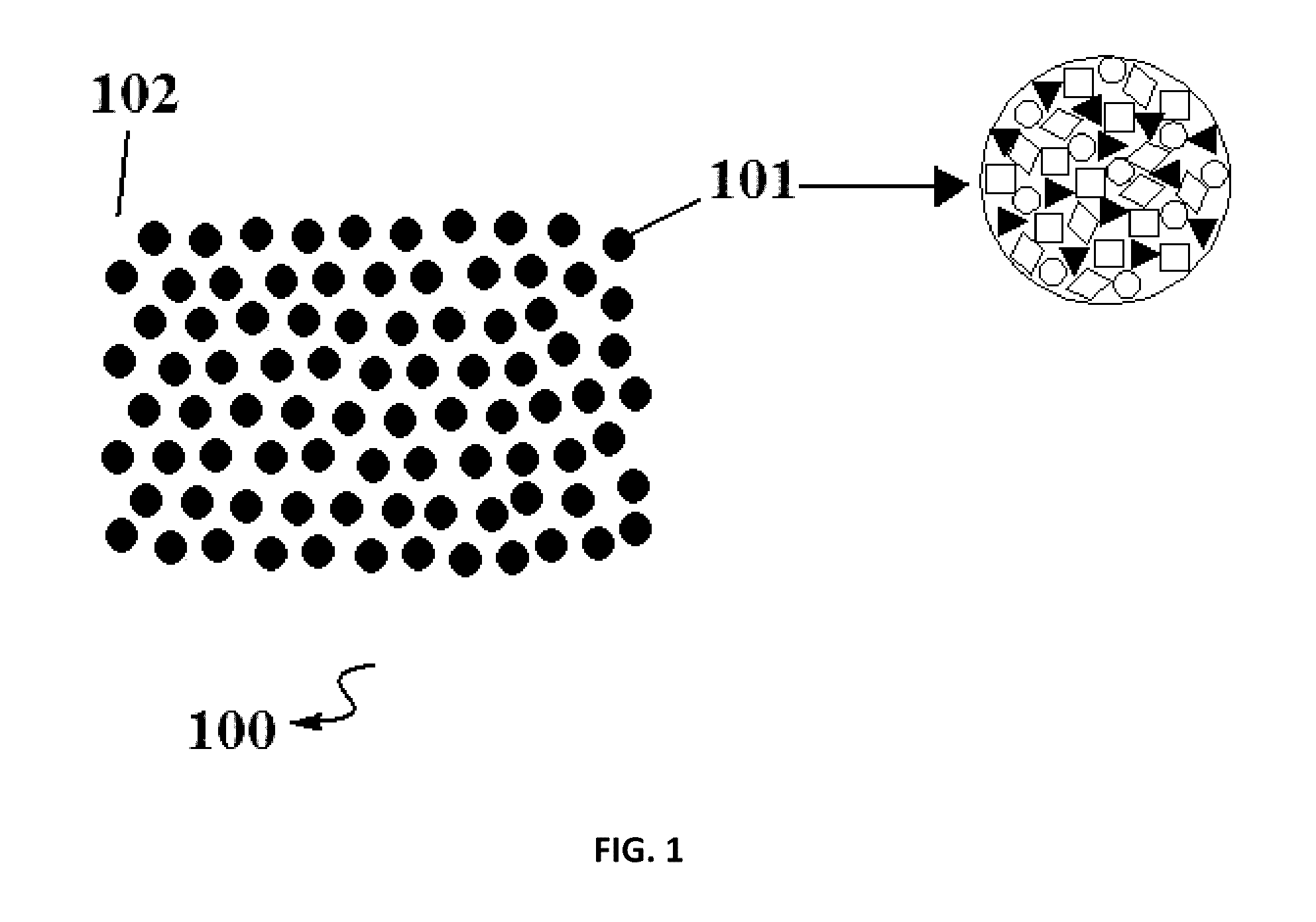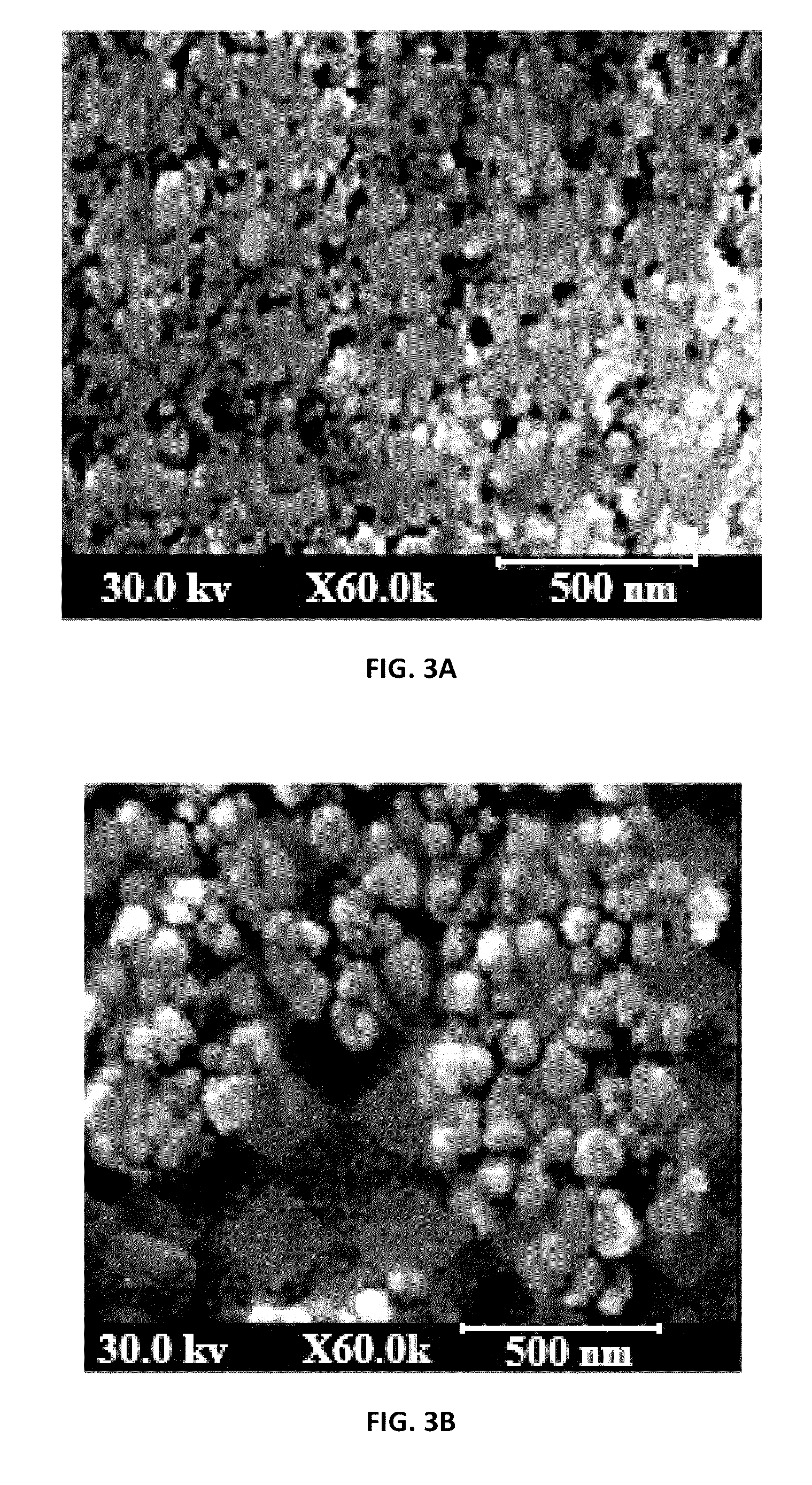Topical nanodrug formulation
a technology of nanodrug and formulation, applied in the direction of medical preparations, capsule delivery, organic active ingredients, etc., can solve the problems of social inhibition, depression, anxiety, and significant physical and psychological ramifications, and achieve the effects of reducing the risk of side effects, reducing and improving the effect of drug side effects
- Summary
- Abstract
- Description
- Claims
- Application Information
AI Technical Summary
Benefits of technology
Problems solved by technology
Method used
Image
Examples
example 1
Preparation of SP-NLC Nanogel or Nanolotion as a Topical Formulation
[0052]Table 1 illustrates representative preparations of a nano-structured lipid carrier (NLC) incorporating spironolactone active agent in a form of a nanogel (formulation “A”) or nanolotion (formulation “B”) in accordance with the present application. In addition, a solid lipid nanoparticles (SLNs) incorporating spironolactone active agent (SP-SLN) in a form of a conventional gel (formulation “C”) and an alcoholic formulation containing 5% of SP (SP-ALC) (formulation “D”) were prepared for further comparison of their properties and therapeutic effects.
[0053]In one example, the nano-structured lipid carrier (NLC) incorporating spironolactone (SP-NLC) in a form of nanogel or nanolotion may be prepared as: A mixture of stearic acid (a solid lipid) and oleic acid (a liquid lipid) with spironolactone in the presence of Span 80 (a lipophilic emulsifier) was melted at 85 C to obtain a lipidic phase. An aqueous phase was ...
example 2
Drug Release Behavior
[0055]In this example, the in vitro releases of SP from SP-NLC, SP-SLN and SP-ALC gels, prepared according to the previous example, were studied by employing dialysis tube diffusion techniques. About 10 mg of each gel was individually kept in a dialysis membrane (MW cut-off 12 000) which was tied at both ends and placed in a separate beaker containing about 100 ml simulated intestinal fluid (pH=about 6.8). The beakers were assembled above a magnetic stirrer in order to continuous stirring at 60 rpm and maintaining constant temperature of about 32±3° C. The samples were withdrawn at predetermined time intervals (0.5, 1, 2, 4, 6, 8 and 24 h), filtered (pore size: 0.22 μm) and the concentration of SP was determined using the HPLC method.
[0056]The SP release percentage from SP-NLC, SP-SLN and SP-ALC gels is illustrated in FIG. 4. This figure show a much higher release of SP from SP-NLC compared to both SP-SLN and SP-ALC gels.
example 3
In Vitro Skin Permeation and Deposition Study
[0057]In vitro skin permeation of SP from SLN, NLC and alcoholic based gels were evaluated using hairless abdominal rat skin. For this purpose, skin from the abdominal area of Wistar male rats, weighing about 200-250 g, was used. After anesthetizing the rats with ether, the abdominal skin shaved using electric and hand razors. In the next stage, the skin was surgically removed and to remove the adhering subcutaneous debris and leachable enzymes dermal side of the skin was put in contact with a saline solution at about 4° C. for about 24 hours before starting the diffusion experiment. The skin specimens were thus prepared and individually placed in Franz diffusion cells having a surface area 3.14 cm2. The excised rat skin was set in place with the stratum corneum facing the donor compartment and the dermis facing the receptor. The receiver compartment was filled with about 5.5 ml of PBS (pH 7.4). The diffusion cells were maintained at abou...
PUM
| Property | Measurement | Unit |
|---|---|---|
| particle size | aaaaa | aaaaa |
| weight percent | aaaaa | aaaaa |
| weight percent | aaaaa | aaaaa |
Abstract
Description
Claims
Application Information
 Login to View More
Login to View More - R&D
- Intellectual Property
- Life Sciences
- Materials
- Tech Scout
- Unparalleled Data Quality
- Higher Quality Content
- 60% Fewer Hallucinations
Browse by: Latest US Patents, China's latest patents, Technical Efficacy Thesaurus, Application Domain, Technology Topic, Popular Technical Reports.
© 2025 PatSnap. All rights reserved.Legal|Privacy policy|Modern Slavery Act Transparency Statement|Sitemap|About US| Contact US: help@patsnap.com



